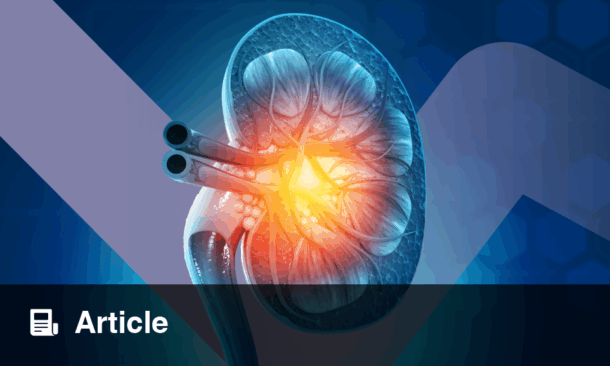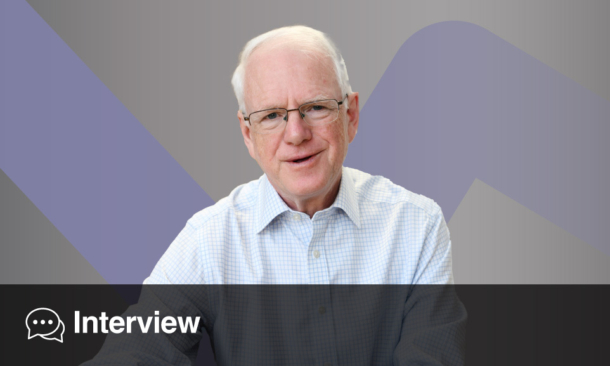Abstract
Background: There is a significant emerging burden of chronic kidney disease (CKD) and end-stage renal disease (ESRD) in low and middle-income countries. Nonetheless, despite these trends, knowledge of CKD epidemiology and management remains incomplete. This review presents a critical analysis and comparison of the current data related to CKD epidemiology in Morocco and an overview of the health economic context of the management of ESRD.
Main text: In Morocco, the demographic transition occurring as a result of urbanisation, population ageing, and the global epidemic of diabetes exposes a growing number of people with CKD who are consuming a significant proportion of healthcare budgets. While the real prevalence of ESRD may be underestimated due to limited access to medical coverage for a fraction of the population, the growing costs in the face of limited resources may shortly compromise the healthcare system.
Conclusion: Based on the available data, the prevalence of CKD may grow during the coming decades, according to the increasing prevalence of its major risk factors (diabetes, hypertension, and older age). Thus, early diagnosis, treatment of the underlying cause, and implementation of preventive measures are fundamental for CKD patients.
BACKGROUND
There is a significant emerging burden of chronic kidney disease (CKD) and end-stage renal disease (ESRD) in low and middle-income countries (LMIC) such as Morocco.1-3 Nonetheless, despite these trends, knowledge of CKD epidemiology and management remains incomplete.4,5 This review presents a critical analysis and comparison of the current data related to CKD epidemiology in Morocco and an overview of the health economic context of the management of ESRD.
DISCUSSION
Prevalence of Chronic Kidney Disease
Based upon representative samples of the Moroccan population, researchers from the MAREMAR Study6 have estimated the prevalence of CKD in the general population through the measurement of markers of kidney damage, such as elevated serum creatinine concentration, decreased estimated glomerular filtration rate using the modification of diet in renal disease equation, and the presence of albuminuria or haematuria. The screening was conducted in a sample of 10,524 adults, aged from 26–70 years, in two Moroccan cities: El Jadida and Khemisset. The study reported an overall CKD prevalence (not adjusted for age) of 6.6% and an adjusted prevalence according to the Moroccan population distribution of 2.9%, with the following age-specific rates: 26–40 years: 0.5%, 41–55 years: 1.3%, and 56–70 years: 6.6%. If these percentages are extrapolated to the overall Moroccan population of 33 million,7 considering its age composition, the total number of people who have CKD could be estimated at 957,000.
Risk Factors of Chronic Kidney Disease in the Moroccan Population
Epidemiology reveals an association between a number of clinical characteristics and the development of CKD. For many potential risk factors, the supporting evidence is inconclusive, of poor methodological quality, or does not clearly establish a causal relationship.1,8-10 In the MAREMAR study,6 the main aetiologies of CKD were diabetes (32.79%), hypertension (28.2%), and nephrolithiasis (9.8%). The authors also reported that 32.8% of the participants were diabetic and 28.2% were hypertensive. Also, it is important to acknowledge that because of the cross-sectional design of the MAREMAR study, it cannot definitively indicate the real aetiology of CKD, rather, it highlights an association with the disease.
In the general population, the crude prevalence of diabetes within different communities in Morocco is 6.1%, and the prevalence of hypertension is estimated at 33.6% (30.2% for men and 37.0% for women), as reported in a national survey of cardiovascular risk factors in Morocco,11 with an expected continuous and significant increase in the diabetes population in upcoming years. For this reason, in Morocco, with the collaboration of the World Health Organization (WHO), a national diabetes prevention and management plan has been launched in order to reduce diabetes-related morbidity and mortality. This is in accordance with the epidemiological data in Arab countries provided by the WHO. The prevalence of diabetes, hypertension, and other cardiovascular risk factors has increased significantly in the last two decades, from 3% prior to 1980, to a current prevalence >10% of the adult population in most Arab countries (United Arab Emirates [19.5%], Saudi Arabia [16.7%], Bahrain [15.2%], and Kuwait [14.4%]).9,12
Aetiologies of End-Stage Renal Disease in the Moroccan Population
Based on partial data reported in the Moroccan registry of renal disease (MAGREDIAL),6,13 diabetes (25–43%), and hypertension and vascular diseases (11–21%) are the two major underlying renal diseases of ESRD in 2013, while glomerulonephritis represents only 4–10%, chronic interstitial nephritis 4–10%, and polycystic and other hereditary diseases account for <3%. However, unknown or missing causes of ESRD are more often reported (25–31%) and this implies the need for in-depth investigation to identify the exact pattern of primary diseases of ESRD.14 During past years, Morocco has undergone rapid changes in major social and economic determinants of health and living standards, and experienced a rapid demographic transition resulting in an increase in the number of adults and elderly people.7 This has led to a shift in the major causes of morbidity and mortality in the Moroccan population, from infectious diseases to chronic non-communicable diseases. Furthermore, the pattern of aetiologies of ESRD in Morocco is not different from that in developed countries,1,4,5,9,15,16 where the prevalence and incidence of diabetes and cardiovascular disease are increasing; this is consistent with improvement in the living standards and urbanisation in Morocco. This pattern, which is similar to that of other North African and Arabic areas,4,9,13,16,17 contrasts with that observed in the sub-Saharan countries,18 where glomerulonephritis, hypertensive nephrosclerosis, and infectious nephropathies are the leading causes.1,8,10,19
Differences in ESRD aetiologies between Morocco and sub-Saharan African countries can also be explained by certain genetic factors; genetic polymorphisms of APOL1 and genes are highly associated with kidney disease predisposition, initiation, and progression. These are more common in people of sub-Saharan African ancestry in comparison to members of the North African population of Arab-Berber ancestry.3
Incidence and Prevalence of End-Stage Renal Disease and Renal Replacement Therapies
In Morocco, and in Northern Africa in general, national epidemiological data about CKD and ESRD are still lacking or incomplete.3-5,8,9,16,20 Such information is essential because the data collected in the American and European populations may not be applicable to those in this geographic area. Data available on the exact prevalence of CKD in LMIC are very limited. In reviewing recent literature, it was found that there is no country with up-to-date information on the epidemiology of CKD. Most of the available information comes from small sample size and single-centre studies and is based on estimations rather than solid epidemiological investigations, which can be biased by obvious factors.3,9 The reported age-standardised global prevalence of CKD in LMIC ranged from 5.3% in Pakistan and 7% in South Africa to 10% in Nigeria and 12% in Iran.1-3 This wide range of prevalences may reflect not only the uncertain national statistics20 but also the discrepancy regarding the methodology to define CKD between countries.20
Regarding the annual incidence of ESRD in Morocco, it has been estimated at 42 and 48 cases per million population (pmp) in the survey reported by the Moroccan Society of Nephrology (MSN), which was conducted in the cities of Tanger-Tetouan-Al Hoceima and Oujda, Morocco.13 The annual incidence in most North African countries was reported and estimated to be 74–200 pmp3,5,20 ranging from 98–198 pmp per year in registries from developed countries.15,21,22 There is no reason to believe that the incidence of ESRD will be lower in Morocco than data reported from countries with a close resemblance in ethnic-genetic background, CKD risk factors, and socioeconomic standards.3 These disparities can be explained by the fact that the reported ESRD incidence refers to patients on renal replacement therapy (RRT), which is often used as a proxy measure for ESRD;21,23-25 however, this figure is an underestimate, as it does not include people who are being managed conservatively, or who do not have access to RRT facilities.10,24,26,27 In addition, many patients with untreated and possibly undiagnosed ESRD are not counted. This could result in an underestimated incidence of ESRD. Taking a conservative estimate of ESRD incidence of 50–100 pmp/year and a population of 33 million,7 an estimated 1,650–3,300 new patients are likely to reach ESRD every year in Morocco. This is consistent with the continuous increase of treated ESRD on dialysis, as reported in the MAGREDIAL registry; the dialysis prevalence rate has more than doubled over the last 10 years, from 100 pmp in 2000, to 161 pmp in 2005, and 323 pmp in 2010.13 Therefore, according to the data provided by the MSN, there were ~16,950 patients receiving RRT in Morocco at the end of 2014, giving a national population prevalence of 530 pmp. According to MAGREDIAL data,6,13 in-centre haemodialysis is the most prevalent modality of RRT in Morocco (99%); the use of peritoneal dialysis is still very low (<0.5%) and can largely be explained by some non-medical, mainly economic, factors, such as reimbursement strategies, which are not well adapted for dialysis clinics and healthcare providers, but also by the limited numbers of peritoneal dialysis training centres.
From 2001–2013, the population of patients who have undergone renal transplantation was estimated at 250 patients and represented only 0.5% of the total RRT population (approximately 7 pmp), as opposed to 50% in Denmark,15,28 40% in France,15,28 24% in Brazil,27 43% in Iran,17 and 44% in Sudan.5,9 The low rate of kidney transplants in Morocco may be a consequence of the sociocultural characteristics of the population and variety of structural factors, such as limited education and awareness, and the lack of financial support for kidney transplantation until recently, with the willingness of the government to expand the renal transplant programme.13 In Morocco, renal transplantation is available in only five academic centres, with the potential capacity to undergo 50 transplantations per centre per year,6,13 which is far from an actual rate. To reverse the current trends, the implementation of suitable reimbursement strategies for renal transplantation is needed, as well as an increase in the investment in the training of young nephrology fellows and education programmes for patients and other non-nephrological healthcare providers. To achieve these goals, academic training centres, which often consider transplantation to be a high-level priority, must have more financial support to invest in research and training related to this modality of RRT.
Despite a probable heavy burden of ESRD in LMIC, relatively few patients receive RRT; the corresponding figures in Japan17,21 and the USA29 are 1,400 pmp and 1,100 pmp, respectively. The average is 1,010 pmp in European countries,15,28 766 pmp in Tunisia,13 407 pmp in Algeria,13 and 480 in Qatar,9 which suggests that ESRD may be either underdiagnosed and/or undertreated in Morocco as in many LMIC.1,3,4,30 International variation in the number of people receiving RRT might reflect underlying differences in CKD incidence,1,8,16,29,31 due to differing risk factors, genetics, or environmental factors. However, it also may be explained by the limited economic capacity of some developing countries to provide highly expensive interventions such as RRT.1,21,22,32 Indeed, several studies have suggested a relationship between some macroeconomic factors such as the gross domestic product (GDP) per capita (as a measure of national wealth) and either the incidence or prevalence of RRT.21,33
Financing Model of the Healthcare System and Economic Impact of ESRD
Apart from the morbidity, mortality, and poor quality of life engendered by CKD and ESRD, these diseases impose high direct and indirect costs to society.29,34,35 The financing of the healthcare system in Morocco represents a total health expenditure, as the sum of public and private global expenses, of 6% of the GDP in the period 2011–201536 and a total expenditure on health per capita at $189 in 2013.36 A considerable amount of this funding is spent for ESRD. Indeed, it was estimated that 12% of the health expenditure was used for reimbursement of dialysis sessions, while ESRD patients represent only 4% of the general population.37 The Moroccan healthcare system includes a mix of public and private financing and delivery, and the government of Morocco introduced two reforms in 2005 to expand health insurance coverage.38 The first is a payroll-based mandatory health insurance system, l’Assurance Maladie Obligatoire (AMO),37 for public sector employees, including eight public-mutual insurers under the co-ordination of La Caisse Nationale des Organismes de Prevoyance Sociale (CNOPS), in addition to the compulsory social security system, La Caisse Nationale de Securité Sociale (CNSS), for formal employees in the private sector. The second system is Le Regime d’Assistance Medicale (RAMED), a publicly financed fund to cover services for the poor.37,38 In addition, there are private-sector mutuals or insurances, which provide insurance to employees and their families, and cover ˜3% of the entire population. Another 3% is covered by private non-mutual insurance. In this context, the Moroccan dialysis care system is currently organised around two sectors, the public and private sector.
The public sector, with the healthcare resources of the Ministry of Health (MOH) as the most important provider, and the private sector, which is made up of two sub-sectors. One sub-sector is non-profit, grouping the health resources of the CNSS; the second sub-sector is for-profit, which made up of the healthcare structures of the free market sector, organised individually or grouped together, by nephrologists. Thus, there are ˜218 dialysis centres in Morocco, which provide treatment for 16,950 patients. The MOH offers the largest network of these facilities, with 105 centres and 5,300 patients, located in provincial hospitals in major cities. Over recent years, the private sector has registered an impressive growth in both treatment capacity and patients treated, with 9,400 patients treated across 113 centres. Dialysis in the private centres is accessible for dialysis patients who are included in:
- The AMO medical coverage (CNOPS, CNSS)
- The RAMED regime: publicly funded dialysis sessions through a public-private partnership
- Private health insurance and some mutual internal regimes
- Patients without medical coverage paying out of pocket
In addition, there are 45 not-for-profit centres, which provide dialysis for 2,300 patients who are unable to enter the public programme or afford private dialysis. Between 2004 and 2015, as a result of rapid economic growth in Morocco and the change in government policy,5,6,13,37 the rate of medical coverage has been considerably improved, from 16% in 2005 to 53% in 2013. Furthermore, dialysis treatment access rates patients increased more than three-fold, and equipment, including the latest-generation medical devices, dialysis machines, and biocompatible synthetic dialysers is available in all public and private units.13,25 However, there are no official data regarding the adequacy of dialysis schedules and therapy targets. Due to economic constraints, the most prevalent practice in public and charity centres is to provide two haemodialysis sessions per week. According to the survey conducted by the MSN in four cities,13 only 53% of patients are on a three sessions per week schedule, and most patients without full health insurance are on a schedule of one to two sessions per week. Although haemodialysis is covered to some extent in some rural zones with no dialysis facilities, patients may be responsible for indirect costs (travel cost, loss of wages), which may also limit their dialysis attendance. In the same study,13 it was reported that the rate of erythropoietin use in prevalent haemodialysis patients is only 33.4%, with mean haemoglobin at 8.3 g/dL. These differences can be explained by the benefit package disparities between health coverage systems, as governmental support for dialysis via RAMED in public facilities or in private centres37 is based on a basic medical coverage, which includes only dialysis with a cap of 10 sessions per month. This did not cover the care of comorbidities, including anaemia, until recently; hence, the management of anaemia in this category of patients was mainly based on blood transfusion. In contrast, for patients with CNOPS or CNSS coverage, or under some internal regimes mutual, erythropoietin is regularly provided without charges.
CONCLUSION
In Morocco, the demographic transition occurring as a result of urbanisation and population age increase, and the global diabetes epidemic, exposes a growing number of people to an increased risk of CKD, who are consuming a significant proportion of healthcare budgets.4-6,13 While the real prevalence of ESRD may be underestimated because of limited access to medical coverage for a fraction of the population,13,37 the growing costs in the face of limited resources may shortly compromise the healthcare system. As in most countries, measures for the prevention and treatment of chronic nephropathies and kidney disease risk factors are urgently needed.







